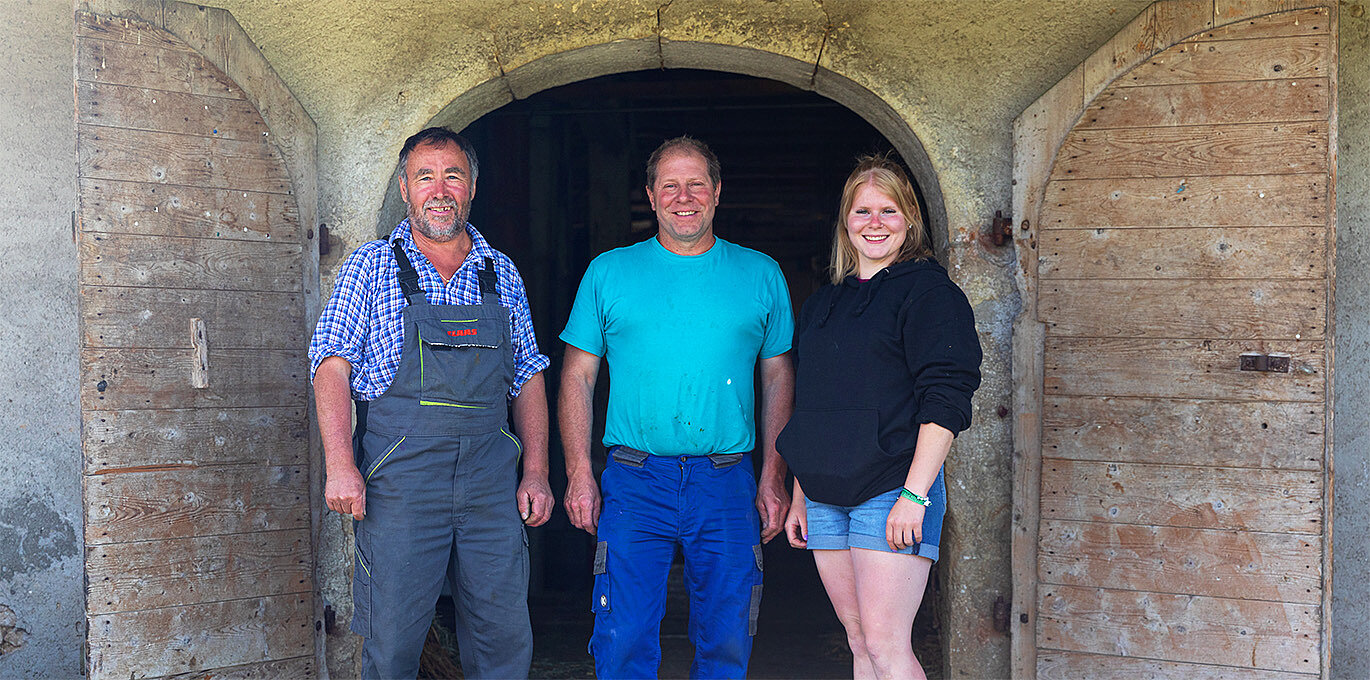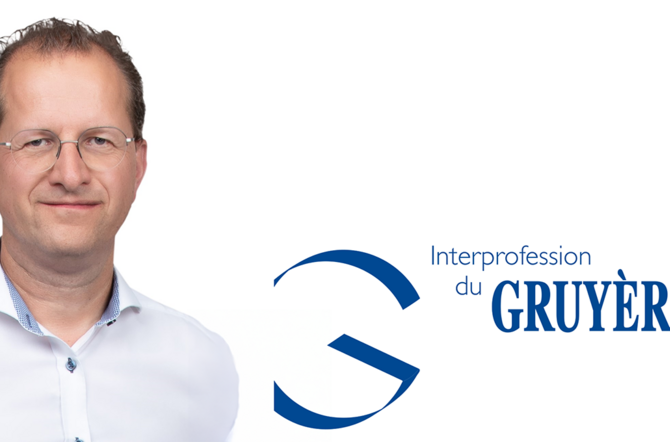An alpine pasture managed by an efficient and friendly partnership
Gilbert Magnin, a producer in Le Brassus, and Pierre-André Golay in L'Orient joined forces in 2005 to rent a vast 125-hectare alpine pasture called Les Grands-Plats de Vent, owned by the commune of Le Chenit. They use 110 hectares of it for cattle, divided into 18 pastures. Their cheesemaker, hired for the season, makes some 16 tonnes of Le Gruyère d'Alpage AOP each year. A herdswoman, Loane, Pierre-André's daughter, looks after the cattle.

"Le Gruyère d'Alpage AOP is made entirely on the premises. We start by looking after the cows and finish in the cellar. Ecologically, it couldn't be better! The pasture is there, as is the wood to heat the vat. The whey is consumed by the pigs on the spot. That's what's great."
Gilbert Magnin, milkproducer in Le Brassus; Pierre-André Golay, milkproducer in L'Orient
When this alpage was put out to bid, the two producers jumped at the chance. "We used to keep our cows on our farms all year round," recalls Gilbert Magnin, "which wasn't really ideal. It was complicated to drive the herd on the road. I can even say that it was a relief to be able to take our herds up to the mountain pasture. Here the cows are at peace. It was the best opportunity for us. We were therefore able to develop our farms." The fact of going up to the mountain pasture has freed up space on the farm for fodder production. As a result, the two producers were able to increase their herd.
This year, they went up with a hundred cows as well as young cattle less than a year old. They keep a few dry cows and some heifers on the farm to graze the areas that cannot be mowed. Pierre-André and Gilbert or his son Clément go up every morning and evening for milking. This is an opportunity for them to make sure that everything is running smoothly.
During the day, Loane, who has recently finished the Marcelin School of Agriculture, manages the mountain pasture. She watches the cows, monitors heat and maintains the pastures. But what she likes most of all is to look after the animals: "Every day they graze in a different area. And they have their preference. When I open the handle of some pens, I don't have to push them in. In others, you almost have to carry them," she jokes. Also, the cows make more milk when they graze in some pastures. They are more generous on one side of the mountain than on the other. Is it the flora, the land? "It's certainly nature!" say the producers.
Once they have finished grazing, the cows also know very well where they want to spend the night. On the mountain, the herds are mixed, yet they have their preference. "The cows sleep together, but there is always space between the two herds," says the herdswoman. This morning, the Magnins were at the back of the pasture and the Golays in the middle. There is no fighting, but they sleep together.
Every morning, the trio meets in front of the chalet. "We always have breakfast together, and it’s not for nothing," says Loane. "We can plan the work, talk about problems. One of us may have noticed something that the others haven't. We discuss it so that we can do as much as possible to improve our work. That's the value of a team!"
For his part, the cheesemaker makes six wheels of Le Gruyère d'Alpage AOP every day. These remain in the cellar for a month, which can accommodate 200 of them. Pierre-André Golay is delighted: "Le Gruyère d'Alpage AOP is made entirely on the premises. We start by looking after the cows and finish in the cellar. Ecologically, it couldn't be better! The pasture is there, as is the wood to heat the vat. The whey is consumed by the pigs on the spot. That's what's great."
The Gruyère d'Alpage AOP Les Grands-Plats de Vent is also of high quality. Mr. Golay and Mr. Magnin have won first prize twice in the OLMA Alpine cheese competition. And last year, they won 4th prize in the "hard cheese" category, as well as 1st prize for Le Gruyère AOP.






